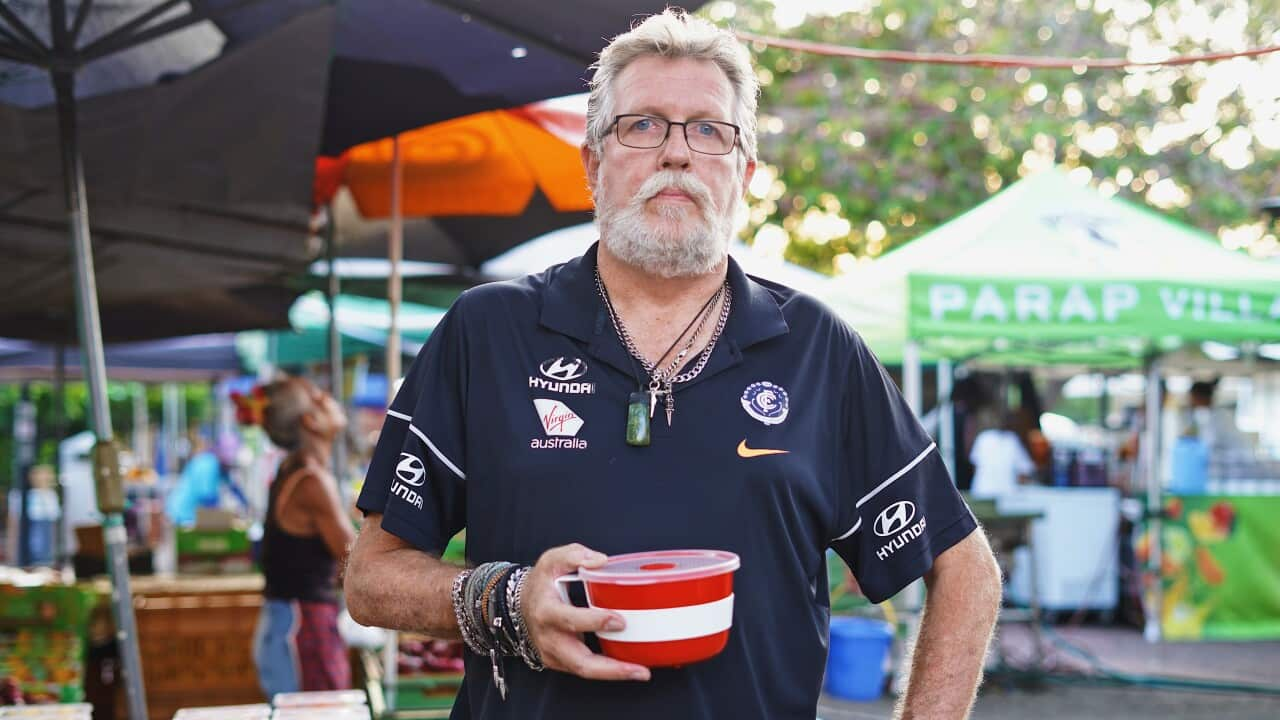One in every three Aboriginal and Torres Strait Islander people living in remote communities are struggling with a food security crisis.
This means some of Australia's most vulnerable people are going hungry, and are anxious about how to pay for food and where it will come from.
Poverty and high prices are two of the key drivers behind food insecurity, which puts people at greater risk of malnutrition, obesity, disease, poor general health and intergenerational poverty. A $2 million study will look for ways to make healthier food options more available in remote parts of Queensland and central Australia.
A $2 million study will look for ways to make healthier food options more available in remote parts of Queensland and central Australia.

A new multi-million study is looking for ways to boost healthier food options in some of the most remote locations in Australia. Source: Moment RF
Clare Brown, a nutrition adviser with the Apunipima Cape York Health Council, said the area's remoteness made it difficult for families to access wholesome and affordable food.
During the wet season, communities can be cut off by road for months at a time, meaning food must be flown in when supplies dip.
"Good nutrition is an essential building block for healthy growth and development, as well as reducing risk of chronic disease," she said.
"So it's crucial that we achieve improvement in food security as this will reduce malnutrition, diet-related disease such as heart disease and diabetes and ultimately intergenerational poverty."
The council, along with the Northern Territory's Central Australian Aboriginal Congress, is partnering with the University of Queensland to better understand food insecurity and work out potential solutions.
Pregnant and breastfeeding women will be involved in the three-year research project, as will carers of children under the age of five.
The university's Dr Megan Ferguson said improving access to nutrient-rich and affordable foods - particularly for women and children - would lift their diets and health, giving children a better start.
Meanwhile, Ms Brown said there can be similar underlying factors between food insecurity and anaemia, with a recent James Cook University study finding high rates of the condition in far north Queensland.
The findings of the study by JCU lecturer Dympna Leonard revealed more than 60 per cent of indigenous children living in remote communities develop anaemia between the ages of six months and 23 months.
Further research by Ms Leonard has found anaemia more than doubles their risk of developmental disadvantage by the time they reach school age.
She wants the focus on anaemia to shift from treatment to prevention, but says the best approach is two-fold.
"We need this work that is happening in food security going ahead, we need families to be able to afford to eat healthy food, and we need promotion to really boost that demand," Ms Leonard said.
"But we also need those really good clinical services that are looking at the iron status of mums and trying to prevent anaemia, or treating anaemia if it arises during pregnancy."










